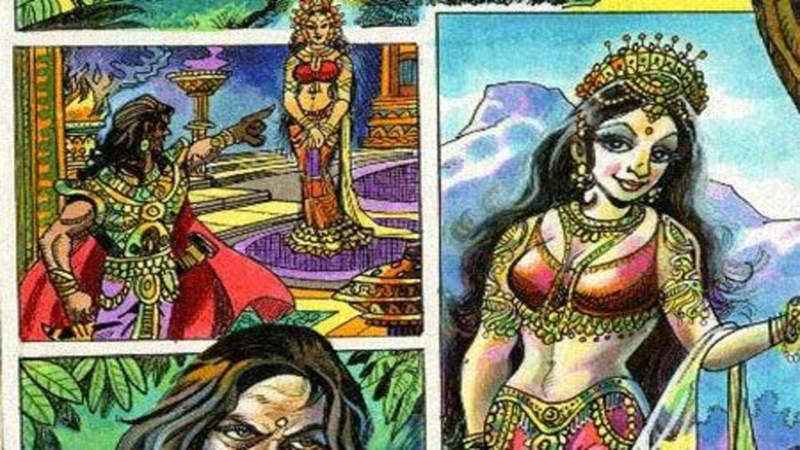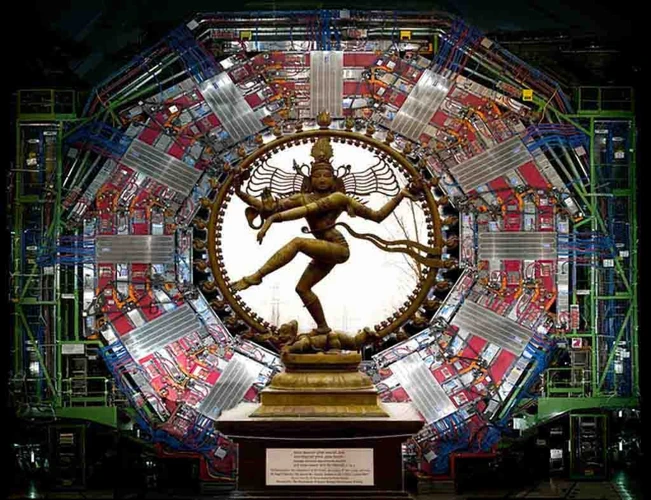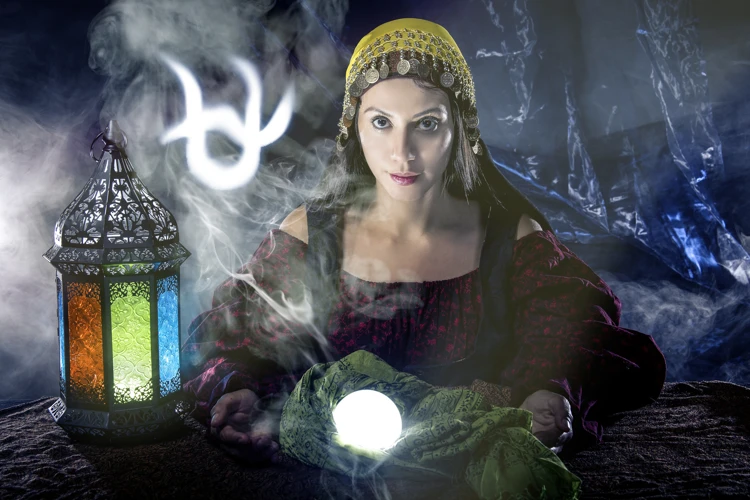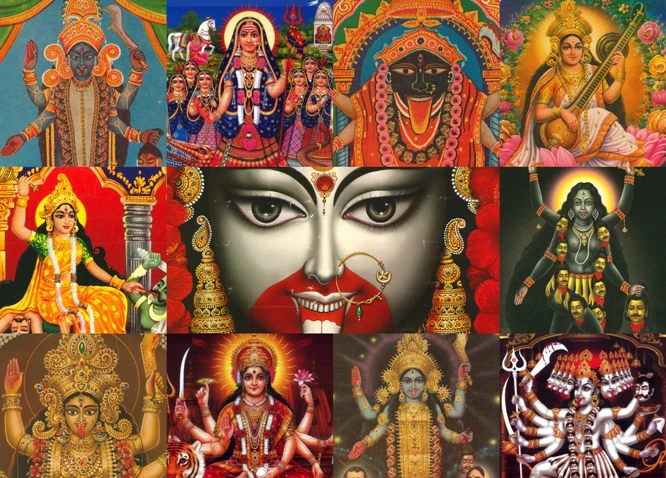Hindu deities are known for their rich symbolism and intricate iconography. From Lord Shiva, the embodiment of destruction and transformation, to Goddess Lakshmi, the symbol of wealth and prosperity, each god and goddess in Hindu mythology carries deep symbolic meanings. In this article, we will delve into the fascinating world of Hindu symbolism, exploring the significance behind the various gods and goddesses, as well as the symbolic elements found in their iconography. By understanding the hidden meanings behind these divine forms, we can gain insights into the profound philosophies and principles of Hinduism. So, let us embark on a journey of exploration into the symbolism of Hindu gods and goddesses.
Hindu Mythology: A Brief Overview

Hindu Mythology is a vast and intricate tapestry of stories, legends, and scriptures that form the backbone of Hindu culture and beliefs. It is a rich and diverse collection of narratives that encompasses the creation of the universe, the exploits of gods and goddesses, and the moral and ethical lessons taught through these tales. One of the most well-known creation stories in Hindu mythology is the Hindu Creation Myth, which tells the story of how the universe came into existence through the actions of the divine trinity, Brahma, Vishnu, and Shiva. The epics of Hindu mythology, such as the Ramayana and the Mahabharata, feature legendary heroes and heroines, along with their triumphs and tribulations. These tales provide a glimpse into the complex cosmology and deep spiritual teachings of Hinduism. To explore the vast pantheon of gods and goddesses and the intricacies of Hindu mythology, you can refer to our comprehensive guide on gods and goddesses in Hindu mythology. Understanding Hindu mythology is essential for unraveling the symbolism that permeates the divine beings worshipped in Hinduism.
The Importance of Symbolism

The Importance of Symbolism is central to the understanding and interpretation of Hindu gods and goddesses. Symbolism serves as a means of conveying complex ideas and concepts in a visual and artistic form. The use of symbols in Hinduism allows for the depiction of abstract concepts, qualities, and attributes that are attributed to the divine beings. Each deity is associated with specific symbols that represent their unique characteristics and powers. For instance, Lord Shiva is often depicted with a third eye, symbolizing his ability to see beyond the physical realm and perceive the ultimate truth. Goddess Lakshmi, the goddess of wealth and prosperity, is often shown holding a lotus flower, representing purity and abundance. These symbols not only enhance the visual appeal of the divine forms but also serve as a way to communicate the deeper meanings and attributes associated with each deity. Symbolism in Hinduism extends beyond the realm of gods and goddesses to include various rituals, sacred objects, and religious texts. The symbolic significance of these elements enriches the spiritual experience and fosters a deeper connection between worshippers and the divine. By understanding the importance of symbolism in Hinduism, one can gain a deeper appreciation for the elaborate iconography and rituals that form an integral part of the religion.
Exploring Hindu Gods and Goddesses

Hindu Gods and Goddesses are an integral part of Hindu religious and spiritual practices. They represent various aspects of the divine and embody different qualities and virtues that are revered and worshipped by millions of people. Each deity has its unique symbolism and significance, reflecting the diverse aspects of life and existence. In this section, we will explore some of the prominent Hindu gods and goddesses, such as Lord Shiva, the destroyer and transformer who symbolizes both destruction and creation; Goddess Lakshmi, the embodiment of wealth, prosperity, and abundance; Lord Vishnu, the preserver and sustainer of the universe; Goddess Kali, the fierce and powerful goddess of time and transformation; and Lord Ganesha, the remover of obstacles and the patron of intellect and wisdom. By diving into the symbolism behind these deities, we can gain a deeper understanding of their significance and the values they represent in Hinduism.
1. Lord Shiva
Lord Shiva, the first deity on our exploration of Hindu gods and goddesses, holds a prominent place in Hindu mythology and symbolism. Known as the destroyer and transformer, Shiva is one of the three main deities in the Hindu trinity, alongside Brahma and Vishnu. His iconography is adorned with various symbolic elements that convey profound meanings.
1) The Third Eye: One of the most significant symbols associated with Lord Shiva is his third eye, known as the “ajna chakra.” This eye represents inner vision, wisdom, and spiritual awakening. When opened, the third eye releases a powerful energy that can destroy ignorance and lead to enlightenment.
2) The Trishula: Shiva is often depicted holding a trident known as the “trishula.” It symbolizes the three fundamental aspects of existence: creation, preservation, and destruction. The trishula represents Shiva’s power over the cycle of life, death, and rebirth.
3) The Serpent: Lord Shiva is often depicted with a serpent coiled around his neck, known as the “Naga.” The serpent represents the energy of kundalini, which is said to reside dormant at the base of the spine. Shiva’s ability to control the serpent signifies his mastery over this potent spiritual energy.
4) The Damru: Shiva is often depicted playing a small drum known as the “damru.” The rhythmic beats of the damru symbolize the cosmic sound of creation, which reverberates throughout the universe. It represents the eternal cycle of birth, death, and rebirth.
5) The Crescent Moon: Shiva is often depicted with a crescent moon on his forehead, known as the “Chandra.” The crescent moon represents the cycle of time and the rhythm of nature. It also symbolizes the cool, soothing power of Shiva’s energy amidst the heat and chaos of the world.
The symbolism associated with Lord Shiva is rich and multi-layered, reflecting the profound concepts and philosophies of Hinduism. Each symbol conveys a deeper meaning and serves as a reminder of the divine qualities that Shiva embodies. Understanding these symbols can enhance our appreciation of Lord Shiva and his role in Hindu mythology and spirituality.
2. Goddess Lakshmi
Goddess Lakshmi, also known as the Goddess of Wealth and Prosperity, holds a prominent position in Hindu mythology. She is often depicted as a beautiful woman with four arms, adorned with jewels and sitting on a lotus flower. Each of her four arms represents a specific aspect – dharma (righteousness), kama (desire), artha (wealth), and moksha (liberation). Lakshmi is revered as the bestower of abundance and fortune, and worshipped by devotees seeking material and spiritual prosperity. Her association with the lotus symbolizes purity and transcendence, as the lotus flower grows from muddy waters but remains untouched by impurities. It is believed that the presence of Goddess Lakshmi in one’s life brings good fortune, success, and auspiciousness. Devotees often perform rituals and prayers dedicated to Lakshmi during Diwali, the festival of lights, to invite her blessings into their homes. By understanding the symbolism of Goddess Lakshmi, we can tap into the essence of wealth and prosperity, not just in a material sense, but also in cultivating a mindset of abundance and gratitude.
3. Lord Vishnu
Lord Vishnu is one of the most revered deities in Hindu mythology. He is known as the preserver and protector of the universe. Vishnu is often depicted with blue skin, symbolizing his cosmic and transcendent nature. He is usually depicted with four arms, each holding different objects that represent his divine qualities and powers. In his upper right hand, he holds a conch shell (shankha), which symbolizes the primordial sound that initiated creation. In his upper left hand, he holds a discus (chakra), representing the wheel of time and the power to destroy evil. In his lower right hand, he holds a mace (gada), symbolizing the power of knowledge and righteousness. And in his lower left hand, he holds a lotus flower (padma), signifying beauty, purity, and spiritual enlightenment. Lord Vishnu is often depicted resting on a massive, multi-headed serpent called Shesha, who symbolizes the eternal cosmic balance. Vishnu is also associated with avatars, or divine incarnations, such as Lord Rama and Lord Krishna, who descend to Earth to restore cosmic order and protect righteousness. The symbolism of Lord Vishnu reflects his role as the preserver, maintaining harmony and order in the universe. By understanding the symbolism behind Lord Vishnu, devotees can gain a deeper appreciation of his divine attributes and seek his blessings for protection and guidance.
4. Goddess Kali
Goddess Kali, also known as Kali Ma or the Dark Mother, is a powerful and fearsome deity in Hindu mythology. She is often depicted with a fierce and wrathful expression, symbolizing her role as the destroyer of evil forces. Kali is associated with time, change, and liberation. Her name, Kali, itself means “black” or “time,” representing the eternal nature of time and the inevitable cycle of life and death.
In iconography, Goddess Kali is portrayed with black or dark blue skin, multiple arms, and a ferocious tongue sticking out. She is usually depicted standing on Lord Shiva, representing her absolute power over even the divine beings. One of her most striking features is her necklace made of human skulls, which represents the liberation of the spirit from the cycle of birth and death.
Goddess Kali also holds various weapons in her hands, each carrying a symbolic meaning. For example, her weapon of choice, the sword, represents divine knowledge that cuts through ignorance and detachment from worldly desires. Another weapon she carries is the trident, which symbolizes the three qualities of nature: creation, preservation, and destruction.
Kali is often depicted wearing a garland of severed demon heads, symbolizing her victory over evil forces and her role as a protector of her devotees. Her intense and fierce appearance serves as a reminder of the strength required to overcome ignorance and attachments that bind individuals to worldly suffering.
Goddess Kali represents the power of transformation and liberation. She teaches us that to attain spiritual enlightenment and transcendence, one must confront and overcome their own inner demons. Additionally, Kali reminds us of the impermanence of life and the need to embrace change. Through her symbolism, worshipers seek her blessings for protection, strength, and the courage to face life’s challenges head-on.
5. Lord Ganesha
Lord Ganesha, also known as Ganapati or Vinayaka, is one of the most beloved and widely worshiped deities in Hindu mythology. As the son of Lord Shiva and Goddess Parvati, he is revered as the remover of obstacles and the god of beginnings. Lord Ganesha is easily recognized by his distinctive elephant head and pot-bellied body, which hold deep symbolic meanings. The elephant head symbolizes wisdom, knowledge, and the ability to overcome any obstacle, while the rotund form represents prosperity and fertility.
Lord Ganesha is often depicted with multiple arms, each holding different objects. In his upper right hand, he holds a goad, or ankusha, used to guide his devotees on the right path and remove obstacles from their lives. In his upper left hand, he holds a noose, which represents the power to capture and control desires and negativity. His lower right hand is raised in a gesture of blessing and fearlessness, while his lower left hand holds a modak, a sweet treat that signifies the rewards of spiritual devotion.
Lord Ganesha is also associated with several animal companions. The most common companion is a mouse, which represents desire and the need to control one’s desires. It symbolizes Lord Ganesha’s ability to ride over the obstacles of materialistic desires. The mouse also signifies the power of adaptability and the ability to enter even the tiniest of spaces, representing Lord Ganesha’s omnipresence.
Devotees of Lord Ganesha believe that invoking his blessings before embarking on any new venture or endeavor will ensure success and the removal of any obstacles or hurdles that may arise. The symbolism surrounding Lord Ganesha serves as a reminder to devotees to strive for wisdom, knowledge, prosperity, and to overcome obstacles with determination and grace.
Lord Ganesha holds a significant place in Hindu mythology due to his symbolism and the values he embodies. His distinct appearance and symbolic attributes make him a revered deity, cherished not only for his ability to remove obstacles but also for the wisdom and prosperity he bestows upon his devotees.
Symbolism in Hindu Iconography
![]()
Symbolism plays a profound role in Hindu iconography, offering a deeper understanding of the gods and goddesses depicted in sculptures, paintings, and statues. One aspect of symbolism in Hindu iconography is the use of hand gestures, known as mudras, which convey various meanings and intentions. These mudras represent concepts like wisdom, protection, and blessings, adding layers of significance to the divine figures. Another significant element of symbolism is the presence of divine weapons or Ayudhas, wielded by the gods and goddesses. For example, Lord Vishnu carries the Sudarshan Chakra, a spinning disc signifying divine protection and the power to eliminate ignorance. Additionally, animal mounts, known as Vahanas, are another important symbol in Hindu iconography. For instance, Goddess Lakshmi is often depicted with an owl, symbolizing wisdom and knowledge. These symbolism elements not only add aesthetic beauty but also convey intricate messages and philosophies, providing a visual language for devotees to connect with the divine.
1. Hand Gestures (Mudras)
Hand gestures, also known as mudras, play a significant role in Hindu iconography and symbolism. These intricate movements of the fingers and hands convey specific meanings and represent various aspects of the divine. Mudras can be seen in the depictions of gods, goddesses, and enlightened beings in Hindu art and sculpture. Each mudra holds a unique symbolism, adding depth to the portrayal of the deities. There are numerous mudras, each serving a different purpose and representing different qualities or energies.
- Abhaya Mudra: The Abhaya Mudra is a gesture of fearlessness and protection. It is depicted with the palm facing outward, fingers extended upward, and the thumb resting against the fingers. This mudra is often associated with Lord Shiva and Goddess Durga, symbolizing their power to dispel fear and grant blessings.
- Anjali Mudra: The Anjali Mudra, also known as the Namaste gesture, is a common mudra used in Hindu rituals and greetings. It is performed by pressing the palms together in front of the chest, fingers pointing upwards. This mudra symbolizes respect, devotion, and unity.
- Dhyana Mudra: The Dhyana Mudra is the gesture of meditation and concentration. It is formed by placing one hand over the other in the lap, palms facing upwards, and thumbs touching each other. This mudra represents a state of calmness, introspection, and spiritual enlightenment.
- Varada Mudra: The Varada Mudra is the gesture of granting boons and blessings. It is depicted with the palm facing outward, fingers pointing downwards. This mudra symbolizes compassion, generosity, and the act of giving.
- Chin Mudra: The Chin Mudra is a popular mudra used during yogic practices and meditation. It is formed by touching the index finger to the thumb, while the other three fingers remain extended. This mudra represents the connection between individual consciousness and universal consciousness.
These are just a few examples of the numerous mudras found in Hindu iconography. Each mudra holds its own esoteric meaning, representing different qualities or aspects of divinity. The use of mudras in Hindu art and worship adds depth and symbolism to the visual representation of the gods and goddesses, enhancing the spiritual experience for worshippers and providing a visual language for communication with the divine.
2. Divine Weapons (Ayudhas)
Divine Weapons, or Ayudhas, play a significant role in Hindu iconography and symbolism. These weapons are not just mere objects but carry deeper meanings and powers associated with the gods and goddesses who wield them. Here are some notable divine weapons and their symbolism:
1. Trishula (Trident): The trident is the divine weapon of Lord Shiva, symbolizing his role as the destroyer of evil forces. Its three prongs represent the three aspects of existence – creation, preservation, and destruction. The Trishula also represents the overcoming of the three gunas (qualities) – Sattva (purity), Rajas (activity), and Tamas (inertia).
2. Sudarshana Chakra (Discus): The Sudarshana Chakra is the mighty discus held by Lord Vishnu. It represents the divine wheel of time and cosmic order. The chakra is said to possess immense power and is a symbol of protection and destruction of evil. It represents the ability to cut through ignorance and bring clarity.
3. Bow and Arrow: The bow and arrow are commonly associated with several deities, such as Lord Rama and Goddess Durga. The bow symbolizes focus, concentration, and the ability to aim at one’s goals. The arrow represents power, strength, and the ability to overcome obstacles.
4. Conch Shell (Shankha): The conch shell is a sacred symbol in Hinduism and is associated with Lord Vishnu. It represents the primordial sound of creation, Om, and is believed to purify the surroundings when blown. The conch symbolizes the power of sound, divine energy, and the call to righteous action.
5. Thunderbolt (Vajra): The thunderbolt is the divine weapon of Lord Indra, the king of gods. It symbolizes strength, power, and determination. The thunderbolt is also associated with spiritual enlightenment and the ability to overcome obstacles on the path to divinity.
These divine weapons serve as reminders of the gods and goddesses’ attributes and their role in maintaining cosmic order and protecting devotees. They are powerful symbols that inspire and invoke devotion in the hearts of worshippers.
3. Animal Mounts (Vahanas)
In Hindu iconography, gods and goddesses are often depicted riding on animal mounts, known as vahanas. These vahanas serve as symbolic vehicles that represent various qualities and attributes associated with the deities. Each god and goddess has their own unique vahana, and the choice of animal is significant in conveying deeper meanings.
Here are some examples of animal mounts and their associated symbolism:
1. Nandi – Lord Shiva is often depicted seated or standing on Nandi, a bull. The bull symbolizes strength, fertility, and power. Nandi represents the eternal companion and devotee of Lord Shiva, reflecting the unwavering loyalty and unwavering devotion of his followers.
2. Garuda – Lord Vishnu is typically seen riding on Garuda, a powerful eagle-like bird. Garuda represents speed, agility, and liberation. As the king of birds, Garuda symbolizes Vishnu’s ability to swiftly navigate through different realms and transcend earthly limitations.
3. Peacock – Goddess Saraswati, the deity of knowledge and arts, is often seen perched on a peacock. The peacock symbolizes beauty, pride, and immortality. It represents the perfect union of outer beauty and inner spirituality, aligning with Saraswati’s embodiment of wisdom and creativity.
4. Lion – Goddess Durga is depicted riding a lion, representing courage, valor, and ferocity. The lion symbolizes the divine strength and fearlessness needed to conquer evil forces. Durga’s mount also signifies her regal power as the fierce warrior goddess.
5. Mouse – Lord Ganesha, the remover of obstacles, is often depicted with a mouse as his vahana. The mouse represents humility, adaptability, and the ability to overcome obstacles, reflecting Ganesha’s attribute of being the “Lord of Beginnings” and the one who helps devotees navigate life’s challenges.
The use of animal mounts in Hindu iconography not only adds visual appeal but also conveys layers of symbolism and meaning. These vahanas offer insights into the divine qualities and attributes associated with the gods and goddesses they accompany, further enriching the overall symbolism in Hindu mythology and worship.
Interpreting the Symbolism

Interpreting the symbolism of Hindu gods and goddesses requires a deep understanding of the context, cultural significance, and mythology associated with each deity. The intricate details and symbols depicted in their iconography carry profound meanings that convey philosophical concepts, moral values, and spiritual teachings. For example, the lotus flower is often seen in depictions of goddesses like Lakshmi and Saraswati. The lotus symbolizes purity, enlightenment, and spiritual growth, reflecting the divine qualities of these goddesses. Similarly, the trident held by Lord Shiva represents the three aspects of existence – creation, preservation, and destruction – emphasizing the cyclical nature of life. These symbols provide a visual language through which devotees can understand and connect with the divine. To interpret the symbolism of Hindu deities, it is crucial to study the scriptures, mythology, and cultural context in which they are worshipped. By delving into the stories, rituals, and teachings associated with each god and goddess, we gain deeper insights into the profound wisdom encapsulated within Hindu symbolism.
Common Symbolic Themes
Common Symbolic Themes in Hindu mythology offer deep insights into the underlying principles and philosophies of the religion. One prominent theme is the concept of duality, which represents the interconnectedness and balance of opposing forces. This is seen in the contrasting deities like Shiva and Shakti, who represent masculine and feminine energies respectively. Another recurring theme is that of transformation and rebirth, symbolized by deities like Lord Vishnu, who undergoes multiple incarnations to restore harmony in the world. The concept of karma, the law of cause and effect, is also evident in Hindu mythology. It emphasizes the idea that individuals are responsible for their actions and will face the consequences, represented by deities such as Yama, the god of death. Additionally, symbolism related to the destruction of evil, protection, and inner knowledge can be found in various stories and deities. These common symbolic themes provide a deeper understanding of Hindu mythology and its teachings, emphasizing the importance of balance, transformation, responsibility, and spiritual growth.
Conclusion
In conclusion, the symbolism present in Hindu gods and goddesses is a reflection of the rich cultural, philosophical, and spiritual traditions of Hinduism. The intricate iconography and symbolic elements associated with deities such as Lord Shiva, Goddess Lakshmi, Lord Vishnu, Goddess Kali, and Lord Ganesha convey profound meanings that go beyond their physical forms. By exploring the hand gestures (mudras), divine weapons (ayudhas), and animal mounts (vahanas) used to depict these deities, we can gain a deeper understanding of their attributes and the cosmic principles they represent. The symbolism in Hindu iconography serves as a visual language, conveying complex ideas and concepts to the devotees. It allows practitioners to connect with the divine and contemplate the deeper truths of existence. Furthermore, there are common symbolic themes that can be observed across different Hindu gods and goddesses, such as the significance of lotus flowers, snakes, and multiple arms, each carrying its own symbolic significance. Overall, the exploration of Hindu symbolism opens up a realm of spiritual inquiry and appreciation for the profound mythology that has shaped Hindu culture for centuries. It invites us to delve deeper into the layers of meaning and seek a greater understanding of the divine mysteries that Hindu gods and goddesses embody.
Frequently Asked Questions
1. What is the role of mythology in Hinduism?
Mythology plays a vital role in Hinduism as it serves as a medium for conveying spiritual and philosophical concepts, moral values, and cultural traditions. It helps believers understand the complex nature of divinity and provides a framework for interpreting religious practices and rituals.
2. Who are the main gods and goddesses in Hindu mythology?
Hindu mythology comprises a vast pantheon of gods and goddesses. Some of the prominent deities include Brahma, Vishnu, Shiva, Lakshmi, Saraswati, Durga, and Ganesha. Each god or goddess represents different aspects of existence and holds unique symbolic significance.
3. What are the key epics in Hindu mythology?
The two major epics in Hindu mythology are the Ramayana and the Mahabharata. The Ramayana narrates the epic journey of Lord Rama in his quest to rescue his wife, Sita, while the Mahabharata delves into the conflict between two sets of cousins, the Pandavas and the Kauravas, culminating in the great Kurukshetra War.
4. What is the significance of deities having multiple arms or heads?
The depiction of deities with multiple arms or heads symbolizes their divine power and ability to carry out multiple tasks simultaneously. It represents their omnipotence and suggests that they can protect and bless devotees in various ways.
5. What do Hindu gods and goddesses represent?
Hindu gods and goddesses are personifications of various virtues, qualities, and cosmic principles. For example, Lord Shiva represents destruction and transformation, while Goddess Lakshmi embodies wealth and prosperity. Each deity serves as a role model and source of inspiration for devotees seeking to cultivate those specific qualities in their lives.
6. What is the purpose of animal mounts (Vahanas) in Hindu iconography?
Vahanas, or animal mounts, are symbolic companions or vehicles of the gods and goddesses. They represent the qualities and characteristics associated with the respective deity. For instance, Lord Ganesha’s vahana is a mouse, symbolizing his ability to penetrate even the smallest spaces and overcome obstacles.
7. What do hand gestures (Mudras) signify in Hindu iconography?
Hand gestures, known as mudras, have specific meanings in Hindu iconography. They convey messages, intentions, and blessings. For example, the Abhaya Mudra, with the hand raised and palm facing outwards, signifies protection and fearlessness.
8. How does Hindu mythology influence festivals and rituals?
Hindu mythology forms the basis for many religious festivals and rituals. Events from mythological stories are reenacted, and devotees participate in celebrations to honor the deities and commemorate significant events. Festivals such as Diwali, Holi, and Navaratri are deeply rooted in mythological narratives.
9. Are Hindu gods and goddesses worshipped by all Hindus?
Hinduism allows for great diversity in worship practices, and different regions and communities may prioritize different gods and goddesses. While some Hindus may focus their worship on a specific deity, others may revere multiple deities or prefer a formless, all-encompassing divine entity called Brahman.
10. How can understanding Hindu symbolism enhance spiritual growth?
Interpreting and understanding Hindu symbolism can deepen one’s spiritual journey. Recognizing the symbolic representations of gods and goddesses can evoke profound meanings, helping individuals connect with the divine and integrate spiritual principles into their daily lives. It offers a pathway to self-discovery, personal growth, and enlightenment.








